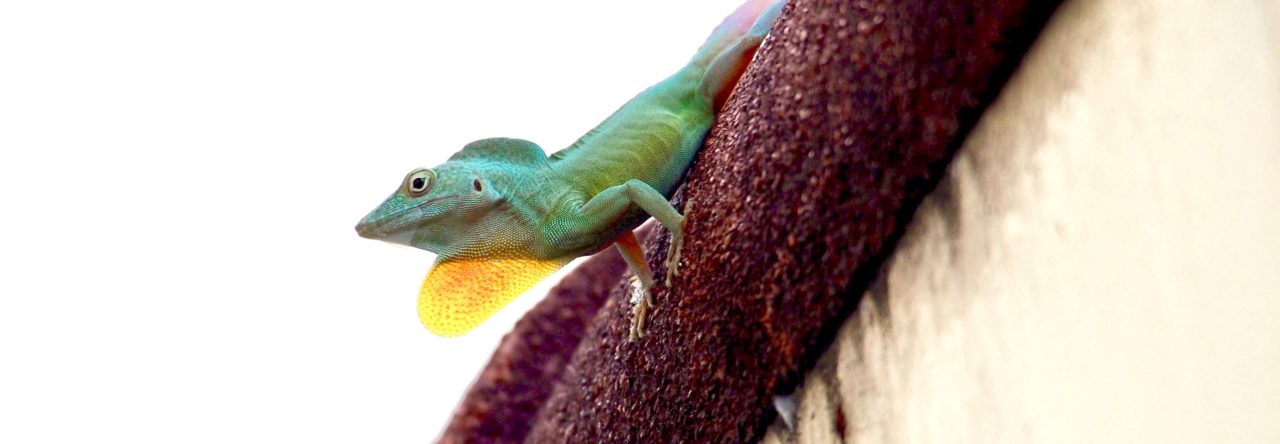With the number of Florida’s exotics herp species already exceeding the number of native species, a couple more may be finding a new home in the Sunshine State.
Back in 2004 I was alerted to the existence of Anolis trinitatis at a Miami Beach hotel. I investigated the claim and sure enough they were there. I collected/removed 11 individuals (including juveniles) in 3 separate visits over a 6 month period. When I returned to the site in late 2006 they had begun renovation to the hotel and pool/garden area; the later being completely stripped of vegetation including the large Ficus trees and Pandanus in which the Anolis had been occupying. Subsequent visits to the site and surrounding area have not yielded any other animals and we think these have been extirpated.
More recently, 3 Anolis coelestinus have been captured in the vicinity of a reptile importer in Broward Co. I captured a large male 3 weeks ago, but did not see any other individuals in or around the area. We are uncertain if this species was released (or escaped) in large enough numbers to become established.
These and 75 other documented species will be discussed in a soon to be submitted paper, “A complete list of verified non-indigenous amphibians and reptiles in Florida through 2010: Outlining the invasion process and identifying invasion pathways and stages.”
Attached images are of anoles I collected in Florida.













